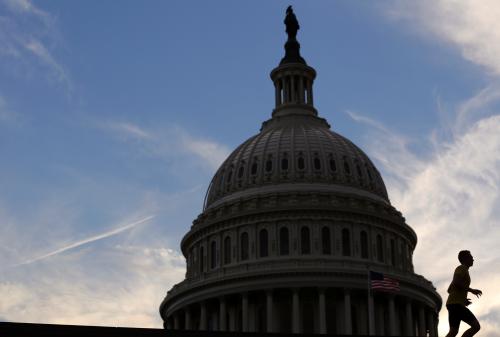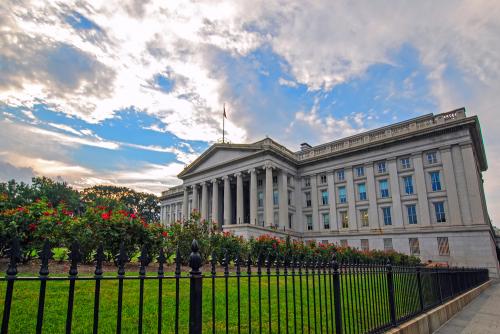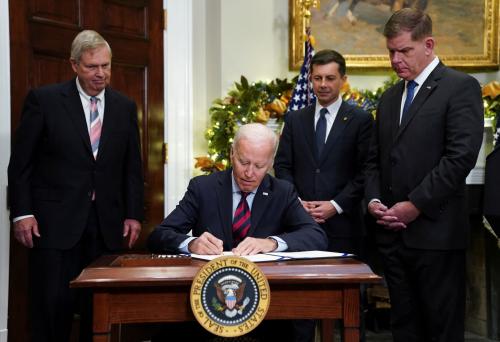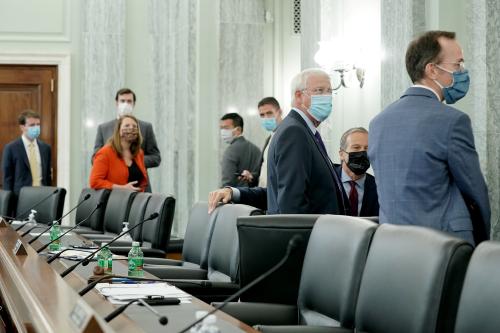When a government agency adopts a new regulation, it is rarely able to address all future contingencies. When new issues arise, the agency often offers after-the-fact interpretations of what its own rule means. But in recent years courts have become less deferential to such interpretations. That shift has an underappreciated consequence: as an agency is promulgating a new rule, it now has more incentive to minimize a rule’s ambiguities and give fuller explanations of the rule.
Of course, these agency interpretations do not happen in a vacuum. When issuing a final rule, agencies must also respond to public comments that raise significant issues. If agencies respond to reduced judicial deference to after-the-fact rule interpretations by providing more robust explanations at the time of promulgation, commenters will be able to better shape how the agency interprets the rule at the outset. In other words, the decline in after-the-fact deference may force agencies to have a richer—and earlier—dialogue with the public that will, in turn, shape the rule at the time it is adopted.
As an illustrative example, we will consider the Environmental Protection Agency’s (EPA) recent proposed rule to implement a new law requiring deep cuts in the use of hydrofluorocarbons (HFCs). HFCs, which are used in air conditioning and refrigeration, have largely replaced chlorofluorocarbons, which were phased out in the 1980s because of the harm they caused to the ozone layer. But HFCs are far more powerful greenhouse gases than carbon dioxide. The proposed EPA rule would create annual HFC production and usage caps. Individual companies could trade allowances provided under these total caps or switch to more environmentally friendly substitutes specified by the rule. Although the rule proposal has received support from a number of commenters, some environmental groups want the agency to go further by withdrawing the Energy Star label from any appliances using HFCs and accelerating approval for low-carbon refrigerants. This piece explains how commenters may seize on recent changes in administrative law to better shape future interpretation and implementation of this rule.
Decline in After-the-Fact Deference
For many years, courts gave broad deference to an agency’s interpretation of its own ambiguous regulations. That deference resulted in part from the belief that, when Congress grants rulemaking authority to agencies, it intends to give those agencies the ability to administer their own rules. But general skepticism toward agency deference has risen in recent years. There has been speculation that after-the-fact deference might encourage agencies to maintain maximum flexibility by intentionally promulgating vague and ambiguous regulations, knowing that they can always offer a later interpretation that courts will likely approve if challenged. Other scholars, by contrast, have disputed that claim as unsupported by evidence and in conflict with how agencies actually operate.
In Kisor v. Wilkie, the Supreme Court addressed the question of deference to agency interpretations of their own rules. Many observers expected the Court to clearly reject that deference, but the Court declined to do so. Instead, it offered several factors courts should examine when deciding whether to defer to an agency’s interpretation of its own regulation. For example, the regulation must be “genuinely ambiguous,” must implicate the agency’s substantive expertise, and must reflect the agency’s fair and considered judgment. These preconditions give lower courts opportunities to reject agency interpretations that they might have deferred to in the past. After-the-fact deference thus survives, but in a weakened state.
Rise of Contemporaneous Agency Rule Interpretations
Not all agency interpretations occur after the fact. Many agencies provide interpretations in the final rule’s statement of basis and purpose, which is published at the same time the rule is promulgated. And as Justice Kagan noted in a section of her Kisor opinion that did not command five votes, “a significant category of ‘contemporaneous’ readings” may provide insight into what the agency intended the rule to mean because if the courts and the public “[w]ant to know what a rule means,” they just need to “[a]sk its author.” These contemporaneous interpretations, moreover, do not suffer from many of the criticisms leveled at post-promulgation interpretations. For example, a primary critique of after-the-fact deference is that it provides agencies with too many incentives to promulgate vague regulations to retain interpretive flexibility in the future. That doesn’t apply when the interpretation occurs at the same time the agency promulgates the rule.
We predict that courts will increasingly turn to a rule’s statement of basis and purpose as an interpretive resource to fill the void left by the decline in after-the-fact deference. As courts do so, agencies have every incentive to respond by providing fuller explanations in those statements with the hope that a court will defer to those explanations if later asked to interpret the regulation. Look for the explanations accompanying final rules in the Federal Register to become richer and more useful. The EPA’s final HFC rule may be such an example given the depth and detail the agency set forth in its HFC proposal. In that proposal, for example, the EPA sought comment on the proposed definitions of over forty terms.
More comprehensive statements of basis and purpose will not provide agencies with the same degree of flexibility as after-the-fact deference. But an agency that provides extensive, often section-by-section analyses of regulatory text is more likely to try to minimize ambiguities at the front end of the process. And a detailed section-by-section analysis may provide at least a “hook” for the agency to handle future unforeseen issues. For instance, the EPA’s HFC proposal asked many questions about how to determine the baseline against which future HFC production and consumption would be measured. The feedback received in response to these questions will likely help the EPA when drafting the final rule to anticipate future questions about how to calculate HFC allowances and provide guidance for addressing such issues, thereby reducing ambiguity after the rule’s promulgation.
Commenters Can Better Shape a Rule’s Administrative History
To comply with the requirements of reasoned decisionmaking, an agency generally must respond to significant comments or categories of comments that challenge a fundamental premise of the proposal. That gives parties commenting on a proposed rule a meaningful opportunity to shape the rule’s administrative history. A commenter can take several specific steps to increase the chances that an agency will respond to the comment in the statement of basis and purpose. An effective commenter can: focus on a rule that has fewer competing commenters vying for the agency’s attention; target particular provisions of a rule rather than offer a general discussion of the proposal; challenge a fundamental premise underlying those provisions; identify a potential ambiguity and a corresponding clarification; and offer alternative language along with an explanation of why that language is better than the proposed provision.
The agency will face at least four choices when deciding what to do next: ignore the comment; adopt the alternative; revise the proposed provision without adopting the alternative; or reject the comment with an explanation. Regardless of the path the agency chooses, the commenter will be well positioned to challenge the agency’s final rule in court or be satisfied with the agency’s response to its focused comment.
For example, a commenter on the HFC rule could argue that the EPA has proposed the wrong approach for determining the initial company allocation of HFC allowances (based roughly on usage from 2017-2019) and suggest an alternative (say, based on industry technological factors). If that type of comment challenges a fundamental premise of the proposed rule, the agency would be wise not to ignore it. And if the agency responds to the comment, that dialogue becomes part of the rule’s administrative history that a court can look to in the future when deciding whether any final rule is lawful.
Reduced judicial deference to future possible EPA interpretations raises the stakes of this dialogue. By responding to meaningful comments at the time any rule gets issued, the EPA can not only try to minimize any ambiguities on the front end, but also have enough of a discussion to argue that any later interpretation of the rule isn’t new or is at least grounded in that contemporaneous interpretation.
Conclusion
The decline of after-the-fact deference gives agencies greater incentive to make their statements of basis and purpose more comprehensive so that any rule ambiguities can be minimized or explained at the time of promulgation. One clear way for agencies to do so would be to provide more detailed responses to meaningful comments that challenge particular aspects of the rule. In that way, the lack of after-the-fact deference could lead to clearer rules than in the past because even if all future ambiguities cannot be eliminated agencies will have incentives to eliminate at least some ambiguities.
The SEC disclaims responsibility for any private publication or statement of any SEC employee or Commissioner. The article expresses the authors’ views and does not necessarily reflect those of the Commission or other members of the staff.
The authors did not receive any financial support from any firm or person for this article or from any firm or person with a financial or political interest in this article. They are currently not an officer, director, or board member of any organization with an interest in this article.







Commentary
A fresh look at the public’s role in shaping agency rules
June 15, 2021